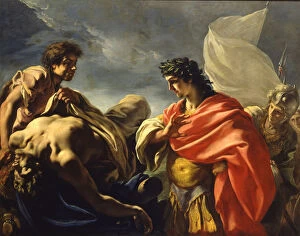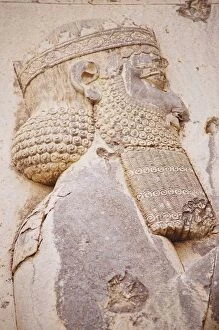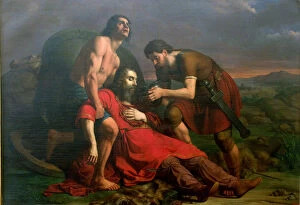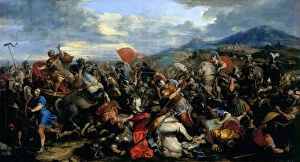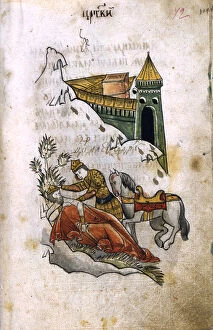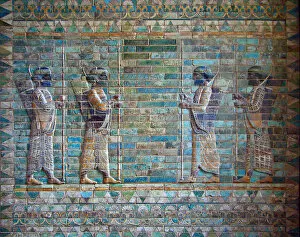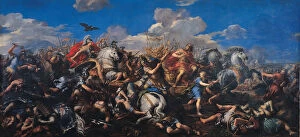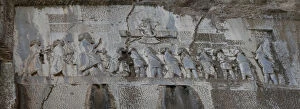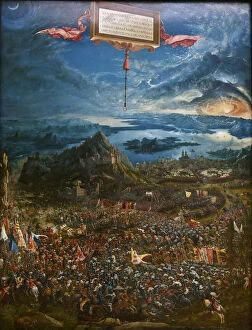Darius Of Persia Collection
"Darius of Persia: A Legacy Carved in Stone and Paintings" Darius I, the Great King of Persia, left an indelible mark on history through his reign from 522 to 486 BC
For sale as Licensed Images
Choose your image, Select your licence and Download the media
"Darius of Persia: A Legacy Carved in Stone and Paintings" Darius I, the Great King of Persia, left an indelible mark on history through his reign from 522 to 486 BC. His grandeur is immortalized in various artistic depictions that span centuries. One such representation can be found in the Archers frieze from Darius I's palace at Susa, created between 510 and 500 BC by Assyrian artists. This intricate artwork showcases the might and precision of Persian archers under Darius' command. Centuries later, another portrayal emerged as Alexander the Great stood before the lifeless body of Darius. In this painting dating back to around 1700 AD, we witness a pivotal moment where Alexander's conquests intersect with Darius' downfall. The bas-relief detailing King Darius I offers further insight into his regal presence. The artist masterfully captures his dignified countenance, symbolizing power and authority that defined his rule. In Cesare Masini's masterpiece "Polystratos and the Dying Darius" from 1837, we glimpse a poignant scene depicting compassion amidst conflict. As Polystratos cradles a wounded Darius in his arms, it humanizes both conqueror and conquered alike. Louis-Jean-Francois Lagrenee's artwork portrays Alexander alongside Hephaestion at the deathbed of one of Darius III's wives. This intimate moment reveals a complex relationship between two great leaders amid personal tragedy. Jacques Courtois' depiction of the Battle of Gaugamela transports us to one of history's most significant clashes. Here we witness how Alexander confronted and ultimately triumphed over mighty Persian forces led by none other than King Darius himself. An illustration from Serbian Alexandria during the 1680s shows Alexander covering the corpse of fallen rival with his cloak—a gesture that speaks volumes about the respect he held for Darius, even in death.




